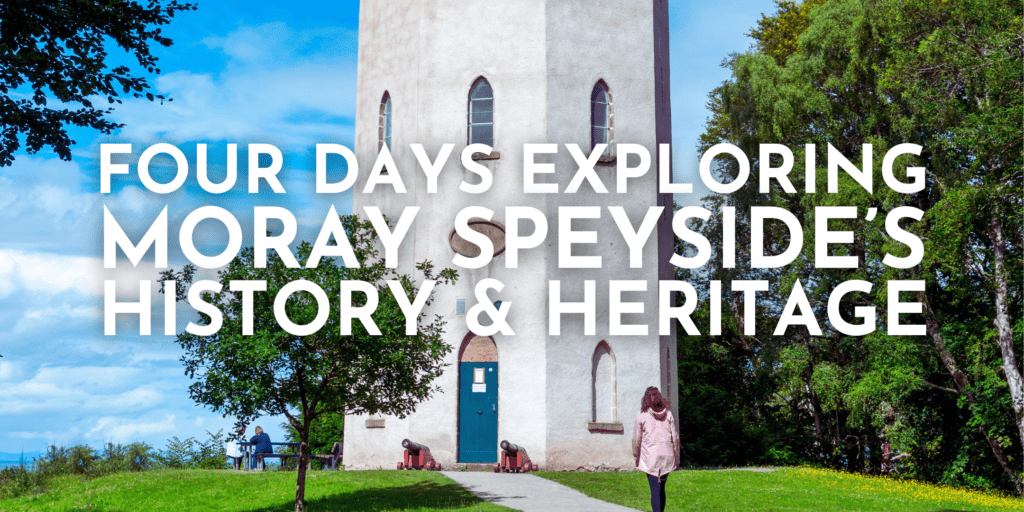
Take a historical four day trip around Moray Speyside with Graeme Johncock AKA Scotland’s Stories as he uncovers some of our region’s amazing stories.
If you’re interested in history, heritage and culture, then there aren’t many better places to explore than Moray Speyside. Not only is it one of Scotland’s most historic areas, but it’s compact enough that you’re never very far from the next stop.
With everything from ancient cathedrals and grand castles to Pictish stones and community heritage centres, there’s plenty to fill your time. Follow my footsteps in this four-day itinerary and discover lots of Moray Speyside history, with plenty of delicious food stops along the way!
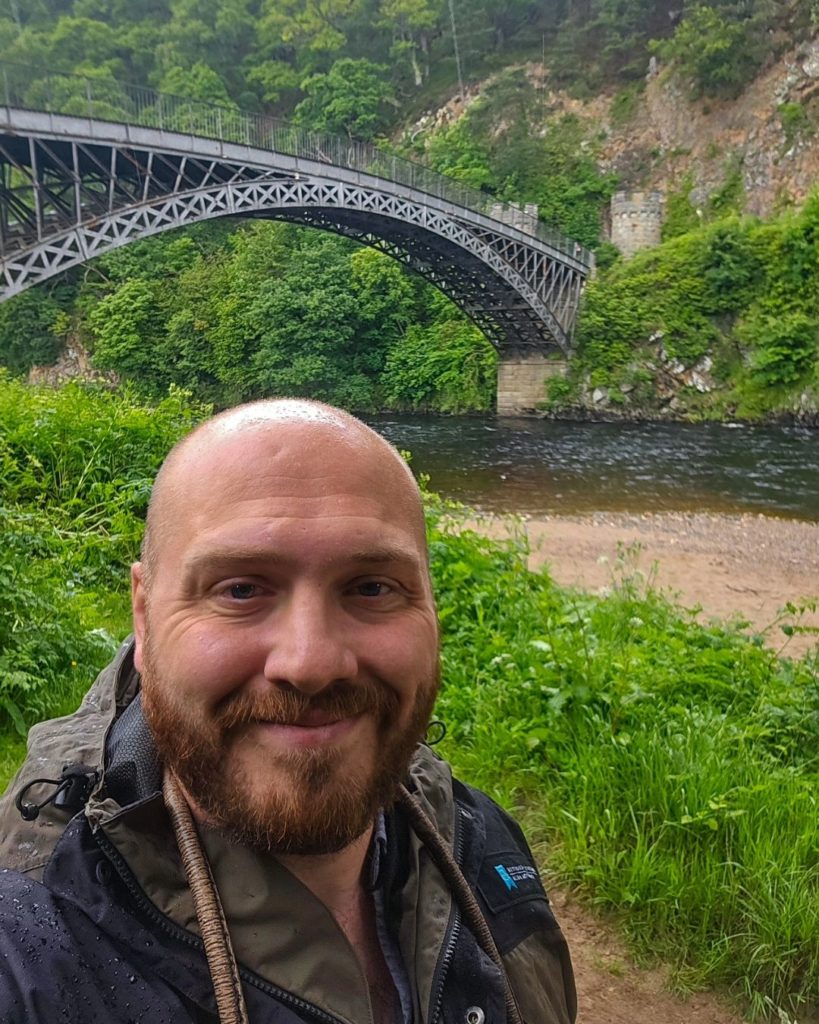

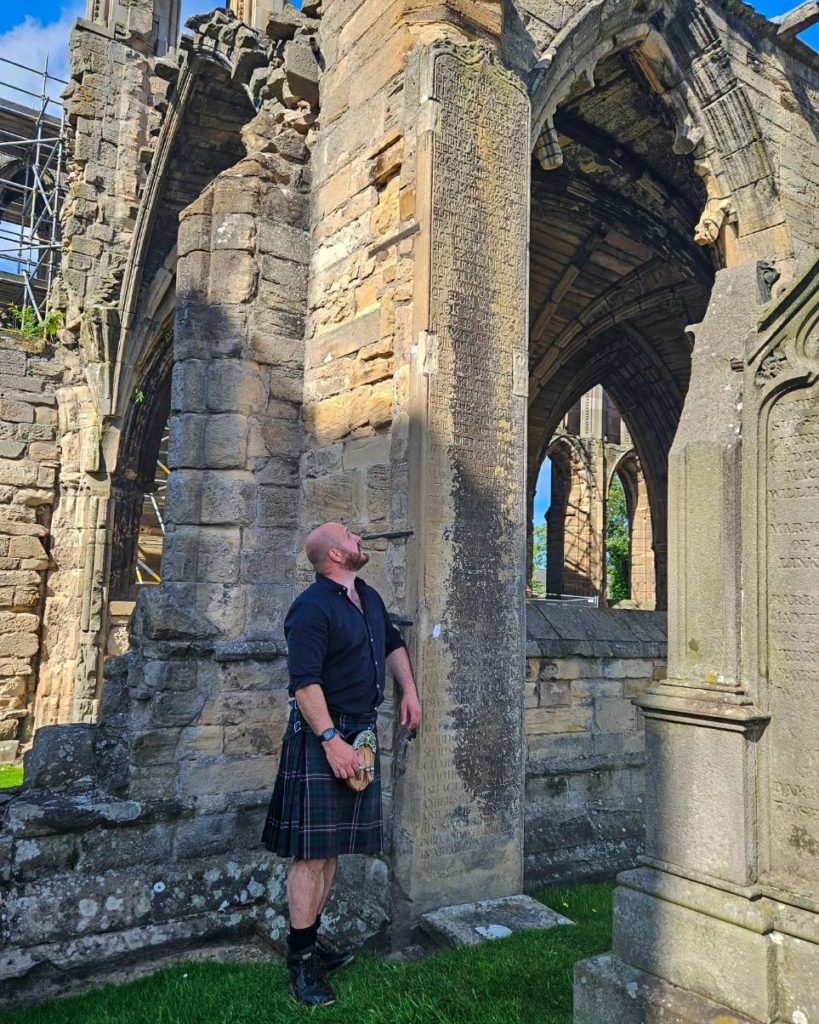
Day 1
Tour Historic Forres
There are plenty of beautiful places in Moray Speyside, but when it comes to history, few can compare to Forres. From the tolbooth that’s stood at the heart of the town since its earliest days, there are fascinating local sites in every direction.
The inconspicuous Witches Stone marks the spot where a victim of local witch trials was burned at the stake. Further along the street, you’ll find the much less subtle Sueno’s Stone. At 6.5m tall, it’s the largest Pictish stone ever made, carved around the 800s to tell a story that’s now lost to time.
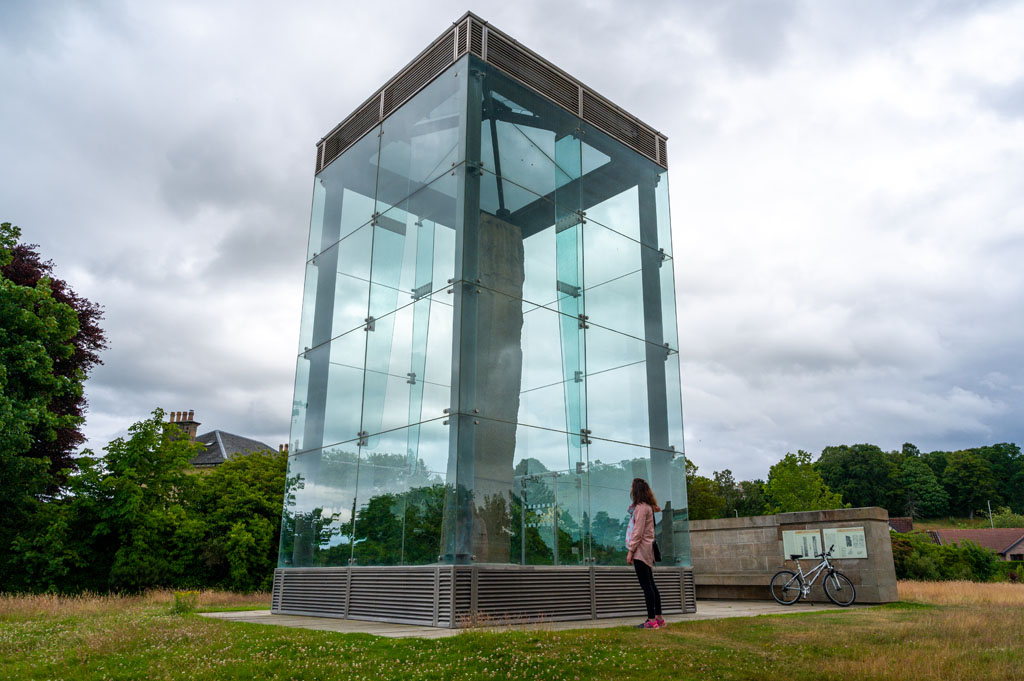
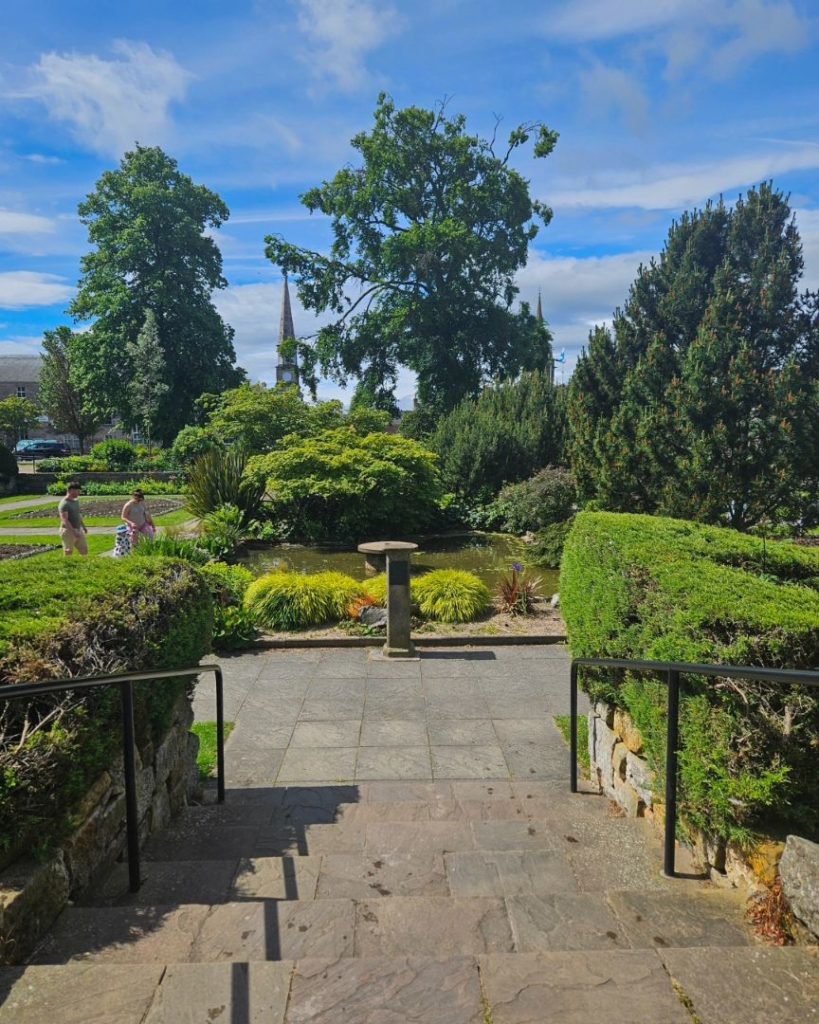
Take a Stroll Through Grant Park
Grant Park has been an important part of life in Forres ever since it was gifted to the town by Sir Alexander Grant exactly 100 years ago. After buying Forres House, he tore down the 10ft walls and opened up this grassy, tree-lined haven for everybody to enjoy.
As well as regular local sports and the annual Highland Games, Grant Park has seen some incredible events like the European Pipe Band Championships. There will be one more large celebration to add to that list with the 100 year anniversary this August!
Climb Nelson’s Tower
On the other side of Grant Park, a short hike up Cluny Hill takes you to Nelson’s Tower. Funded by public subscription to commemorate Admiral Horatio Nelson and the Battle of Trafalgar, construction began in 1806 and it was finally opened to the public in 1812.
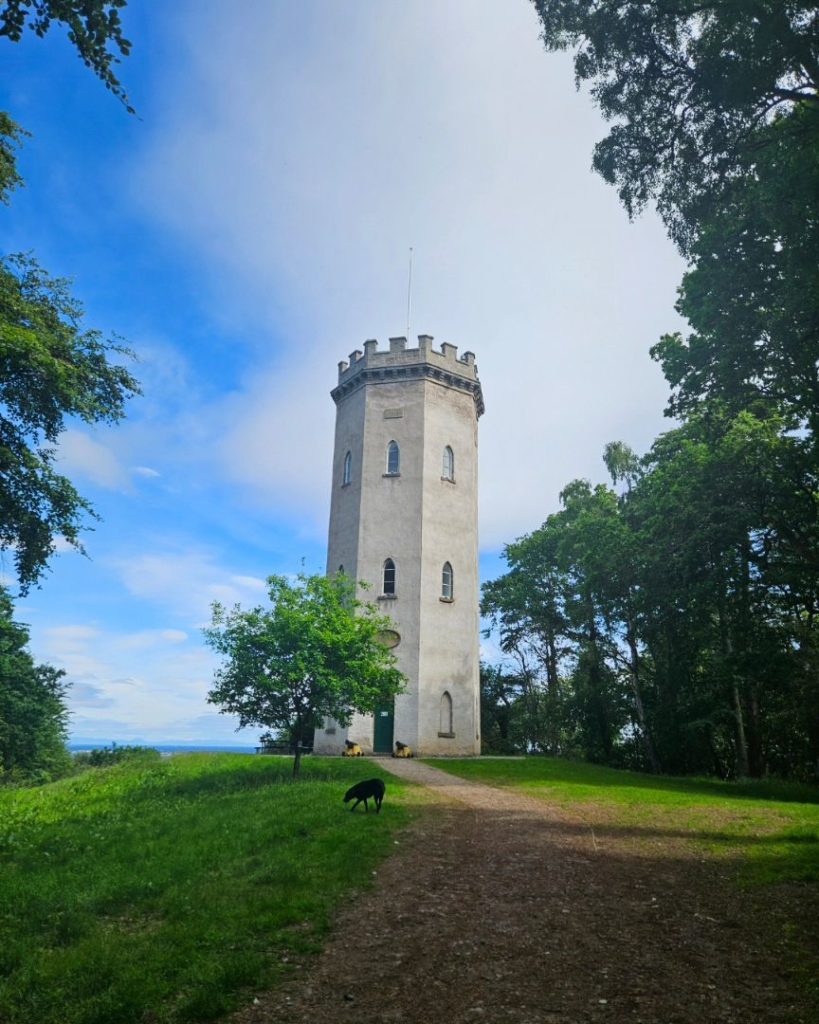
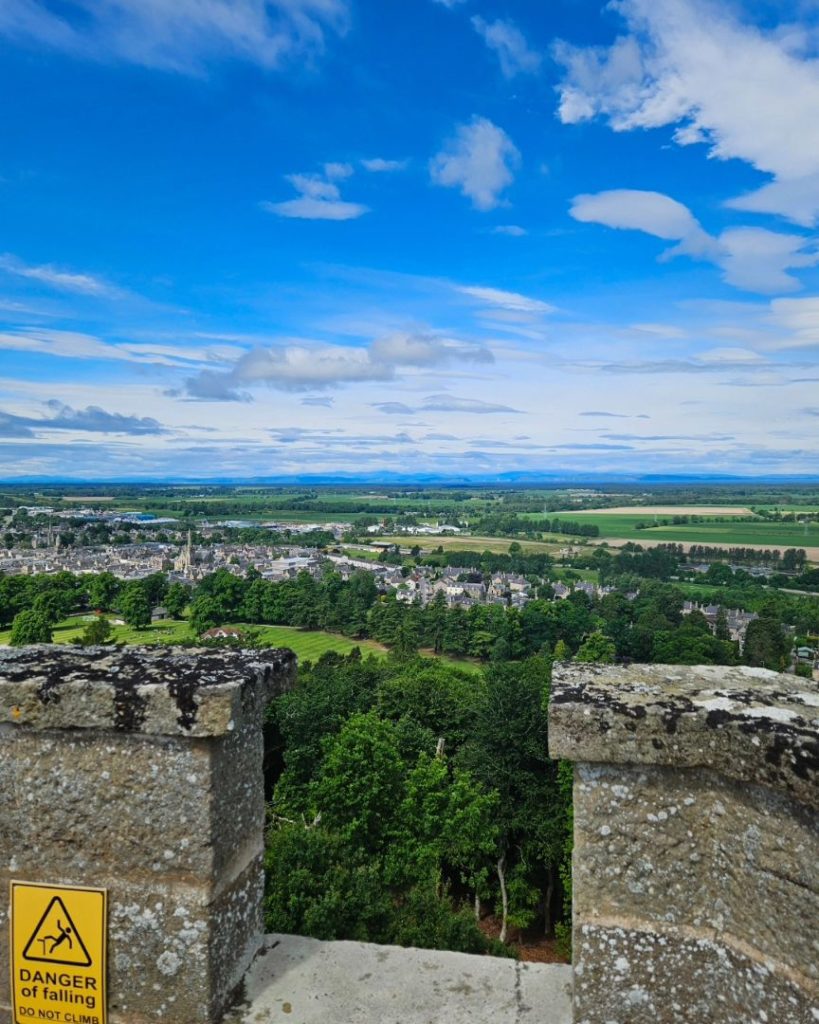
This is more than just an impressive landmark though; it offers some of the best views in Moray Speyside from the roof. Look out for the Red Ensign flying from the flagpole between 2-4pm daily to show that the tower is open for visitors to climb the 96 steps.
Lunch at Cafe 1496
After climbing all those steps, recover some energy with lunch at Café 1496. Found just across the street from the Tolbooth, the café takes its name from the year King James IV confirmed Forres burgh charter.
It offers great coffee and delicious food with breakfast options available all day! To make things even better, Café 1496 is dog friendly so nobody has to miss out.
Step Back In Time At Burghead Visitor Centre
One of the most important historical sites in Moray Speyside is also one of its most understated. Beneath the 19th-century streets of Burghead lies Scotland’s biggest known Pictish Fort! That amazing local history is brought to life at the Burghead Visitor Centre.
During the construction of today’s fishing village, around 30 stones showing carved bulls were discovered. While we know little about the Picts and their symbols, it seems clear that these were a symbol of power!
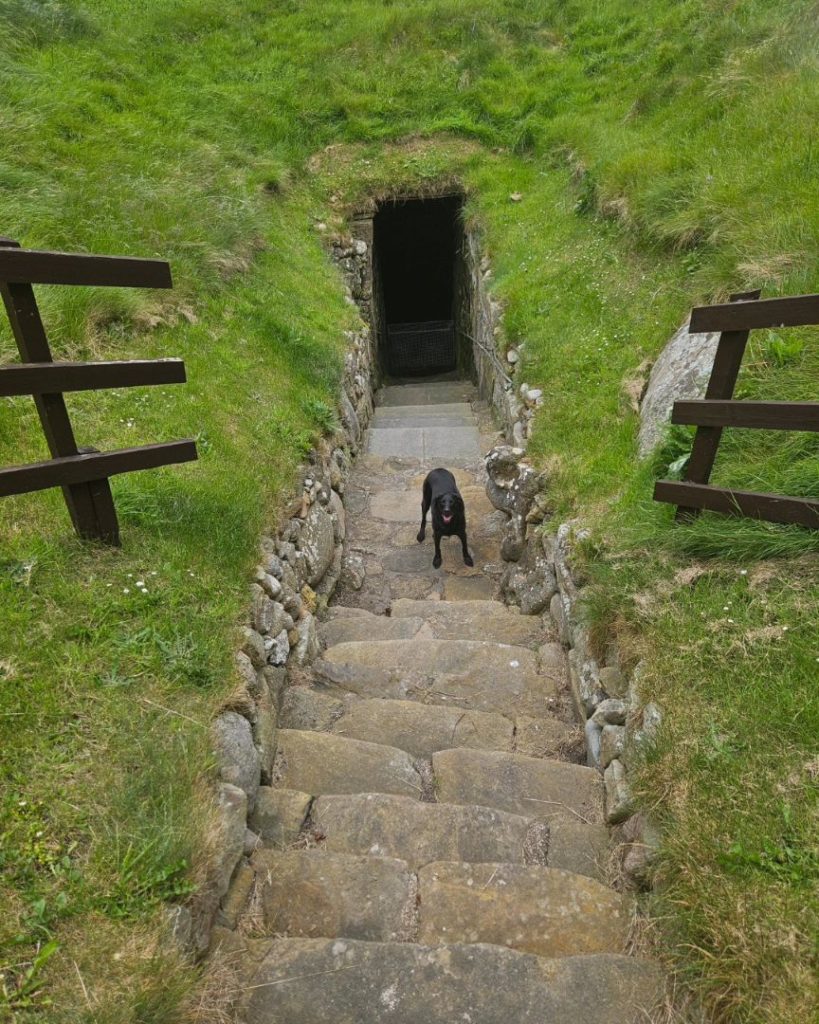

Wonder at the Burghead Well
The Burghead Bulls weren’t the only thing uncovered during the 19th-century construction. A mysterious well was also discovered, including steps leading into the water, hewn straight from the rock. Fed from an underground spring, it was expanded with a plan to provide the village’s water supply but took 6 days to refill when emptied.
Archaeologists now think that it may have held a more symbolic or ritualistic role for the Picts. You can ponder the true reason yourself after collecting the key from the Burghead Visitor Centre.
Duffus Castle
Moray Speyside has plenty of historic fortresses to explore, but Duffus Castle is a particular highlight. The ruins we see today date from the 13th century, although they’re standing on the remains of an even older motte and bailey. Once surrounded by a defensive bog, this stronghold was home to some of the most powerful people in Moray.

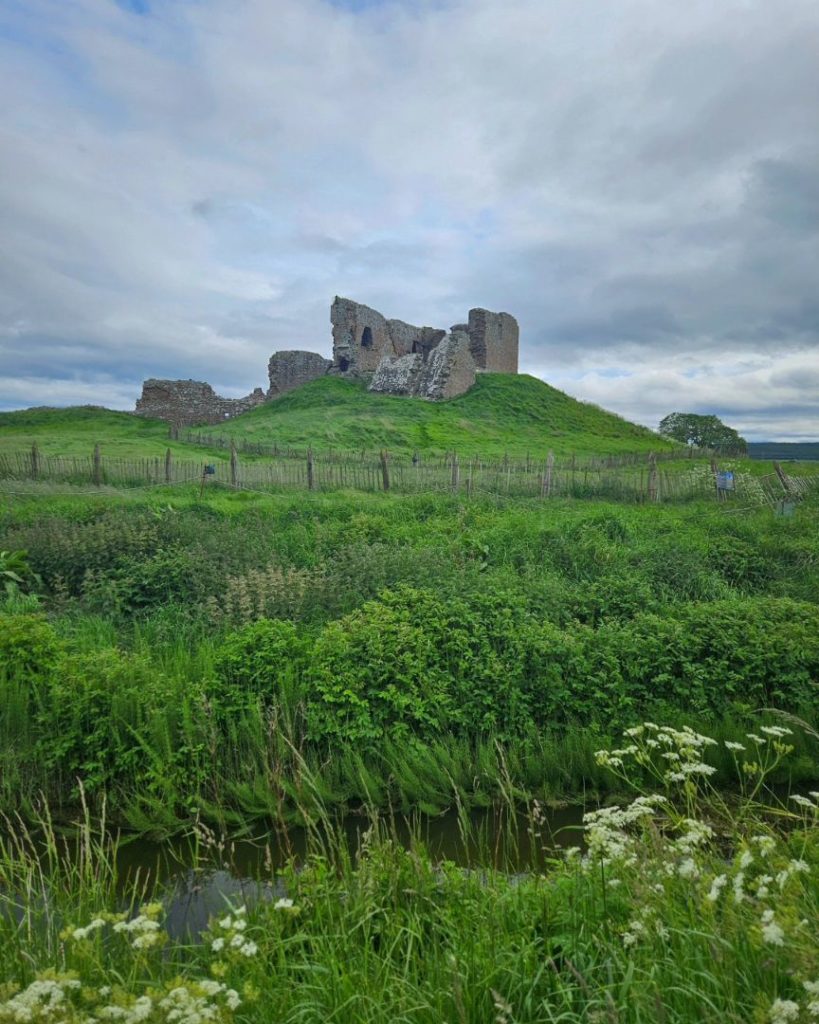
Originally home to a man called Freskin, the ancestor of the Sutherlands and Murrays, the last important figure we know stayed here was Bonnie Dundee. The Jacobite leader was a guest of Lord Duffus shortly before the Battle of Killiecrankie in 1689.
There isn’t much of the old tower left standing, it was abandoned after it began to subside under its own weight. Never replace a wooden castle with a stone one without improving the foundations…
Dinner At Bootleggers
After a busy day exploring Moray Speyside, sit down for dinner at Bootleggers in Hopeman. Your food is accompanied by great views out over the Moray Firth and a relaxed eating environment. Meals are designed to be fun and the dishes all shared between the table like a fun family dinner!
Day 2
Have a Historic Dram At Glenlivet Distillery
You simply can’t visit Moray Speyside without enjoying a dram or two on a distillery tour. While there are plenty of them to choose from, The Glenlivet is particularly worth visiting this year. It’s exactly 200 years since George Smith made the decision to start making his whisky (legally)!

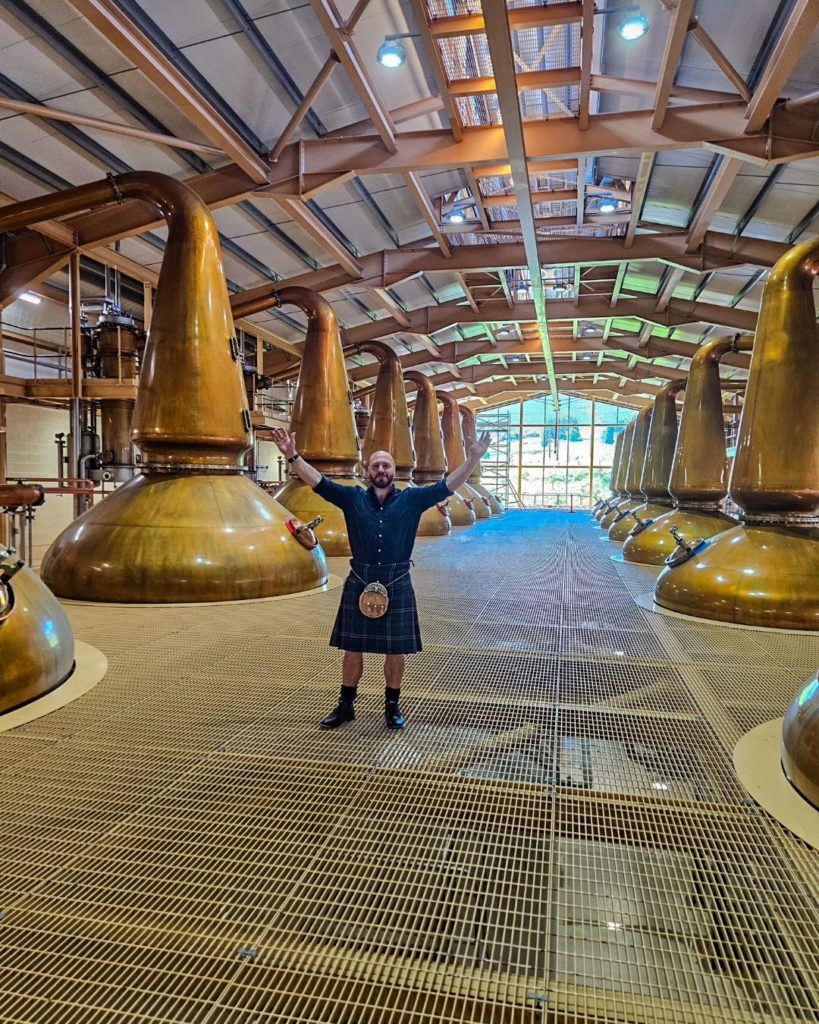
Of course, Glenlivet’s history goes back even further than that as one of the many illicit distillers in the Speyside region. It’s said that even King George IV asked for this famous dram on his trip to Edinburgh in 1822.
On a tour of the distillery, you’ll learn about this early history while exploring the mash tuns and still room to see how far The Glenlivet has come. Don’t forget the post-tour sampling where you can taste that success or take away a driver’s pack to enjoy your drams at home!
Uncover The Inveravon Pictish Stones
Quietly tucked away down a wee track, perched above the River Spey, stands picturesque Inveravon Church. It’s a peaceful spot and the 19th-century building belies the true age of this religious site. However, it’s something else that really draws visitors to Inveravon.
A small collection of beautiful carved Pictish stones is found sheltered by a porch on the side of the church. We might not know what the symbols mean, but some are easily made out. There’s the usual double disc and Z-rod as well as a less common but very striking eagle to get your imagination going!
Lunch At Aberlour Hotel
Right in the centre of Aberlour, on the corner of the square, you’ll find the family-run Aberlour Hotel. There’s an extensive menu for lunch, but since the hotel was the recent champion at the Cullen Skink World Championships, there was only ever going to be one choice.
The Cullen Skink with a twist featured bacon and black pudding – a worthy winner. So good that even though the restaurant is dog-friendly, my labrador didn’t get a drop!
Explore Elgin Cathedral
Another historical site in Moray Speyside with an important anniversary, the gargantuan Elgin Cathedral is turning 800 this year! Known as the Lantern of the North, this icon of the town might be a ruin today, but it’s still a stunning place to visit. As well as craning your neck to admire the soaring towers, make sure to head inside and discover some of Elgin Cathedral’s stories.
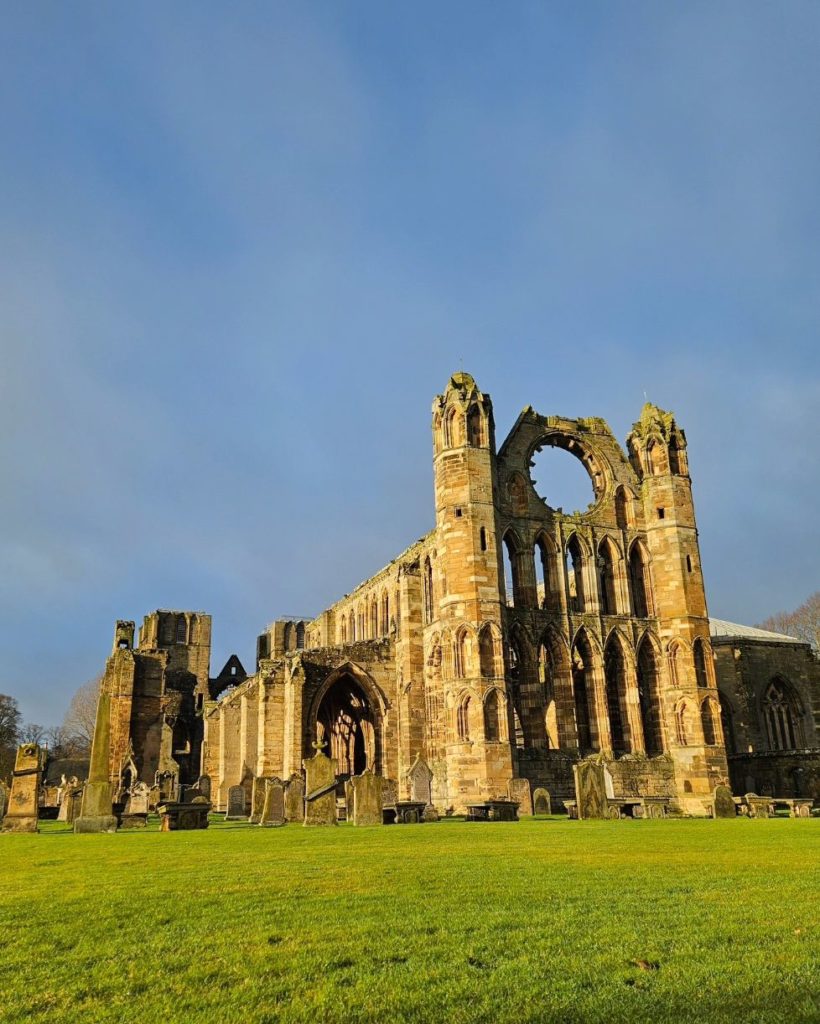

Some visitors may already know of the Wolf of Badenoch and his terrible deeds. Alexander Stewart, son of King Robert II, burned the cathedral down in the late 1300s and some of the walls are still bright red from the flames. There’s far more to discover at Elgin Cathedral though than one tale of destruction!
Get up close and personal to the exquisitely carved stonework that’s displayed inside the tower, before climbing to the top for views out across Elgin. Wander the grounds to find Scotland’s tallest gravestone, effigies of bishops and medieval, painted angels in one of the alcoves. Make sure you don’t miss the octagonal chapter house, complete with vaulted ceiling that provides you with perfect acoustics.
Dinner At Crown & Anchor
Take a trip to the coast for dinner at Crown & Anchor Inn in Findhorn. It’s a lively local pub and hotel but best known for serving up delicious local food. As you might expect, there’s lots of seafood on the menu but no matter what your tastes are, there’s something for everybody.
Day 3
Be Fascinated at Buckie Fishing & Heritage Centre
For generations, fishing has been an integral part of life all across Moray Speyside. Men who lived along the coast did the fishing before their wives carried the catch for miles to sell in inland towns. You can learn all about this fascinating way of life at the Buckie Fishing & Heritage Centre.
Run entirely by volunteers who have first-hand experience of fishing on the Moray Coast, it’s an underrated highlight of the area. Learn about local boat building, tragic fishing disasters and what life was like for everybody involved in the fishing industry. You won’t find people more welcoming or knowledgeable about Moray fishing than these volunteers!
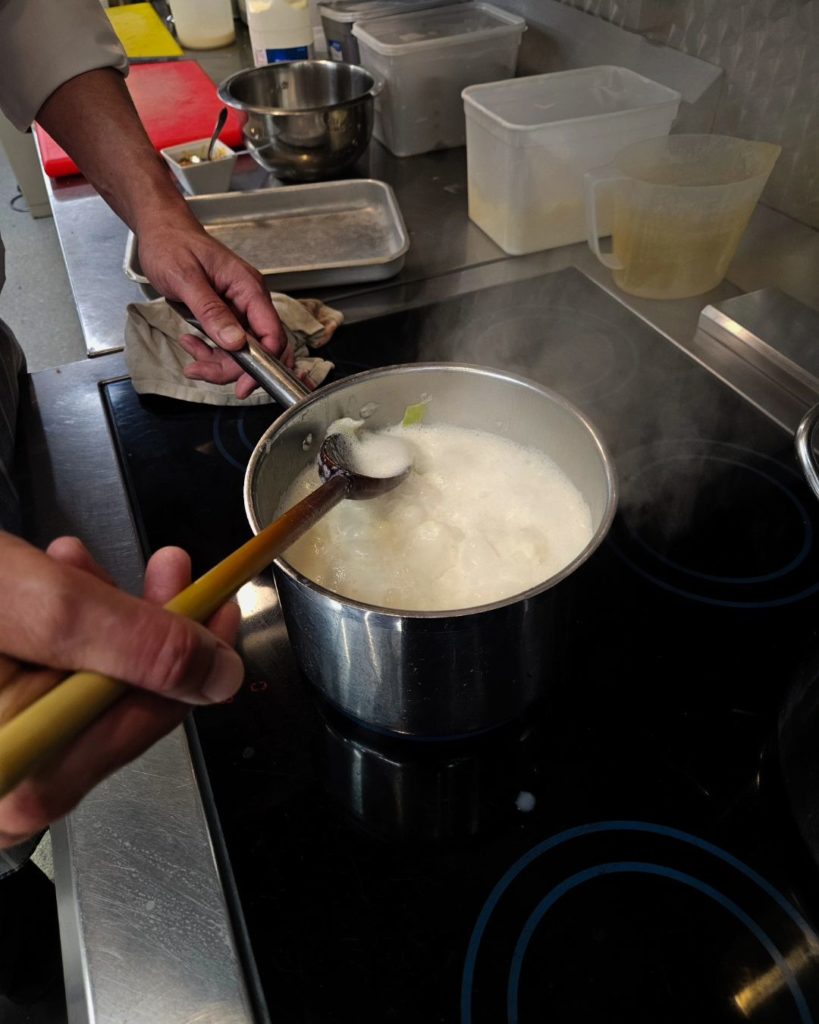
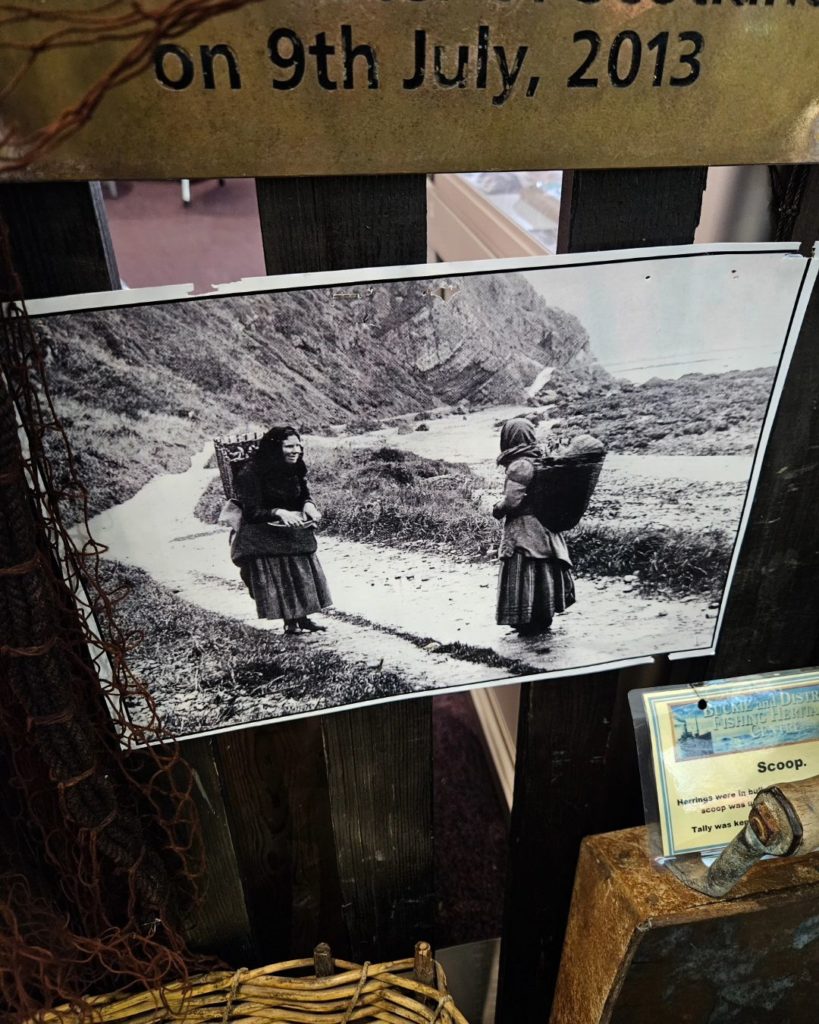
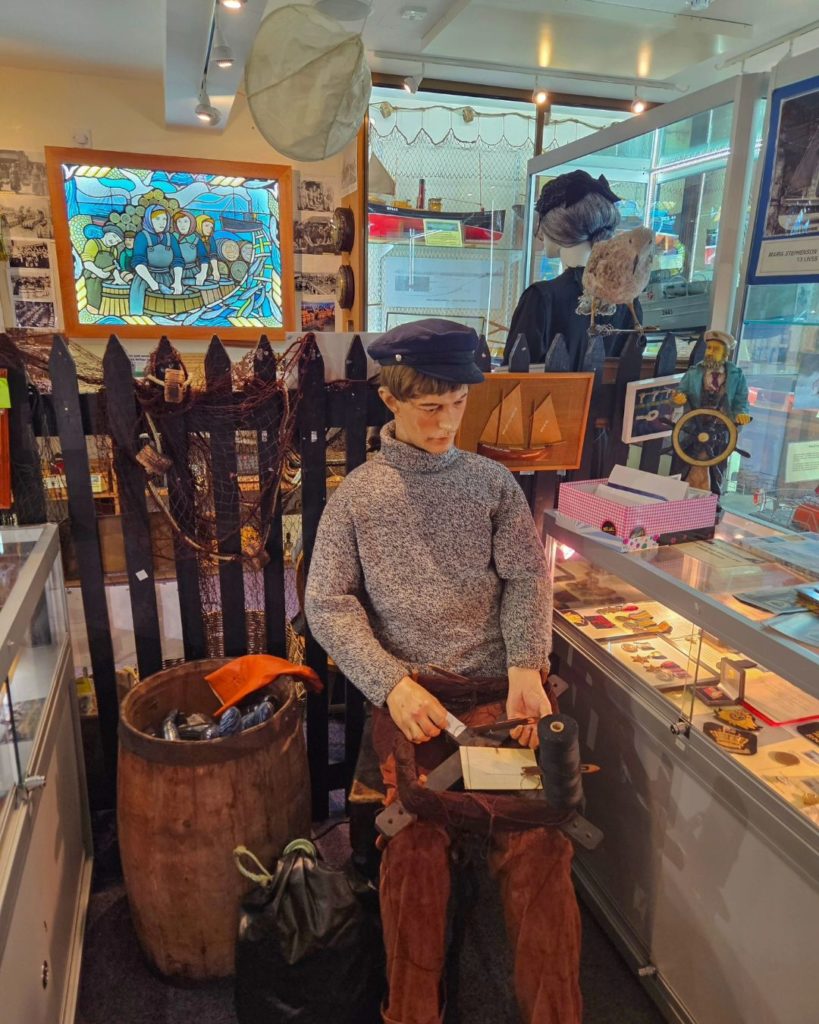
Enjoy The Full Cullen Skink Experience
After learning about how important fishing has always been to the local area, discover exactly how it was used in the Cullen Skink Experience. In case you haven’t heard of this local delicacy, Cullen Skink is a soup made of cream, smoked haddock and potatoes.
There’s no better place to learn about the dish than in its birthplace Cullen! Join head chef Luke at the Seafield Arms as he walks you through creating Cullen Skink. Once finished, your tasty creation makes the perfect lunch.
Don’t forget to visit the Cullen heritage centre next door which includes an amazing model of the now-destroyed village of Old Cullen!
Cross Craigellachie Bridge
Fuelled by Cullen Skink, head up the River Spey to the iconic Craigellachie Bridge. This engineering marvel was built in 1814 by Thomas Telford with a design that’s just as admired today as it was over 200 years ago.
The elegant, cast-iron bridge stretches 150ft across the river in a single span, proving that practicality can still be pretty. Craigellachie Bridge justified its design early in its life, standing strong during the Great Flood of 1829!
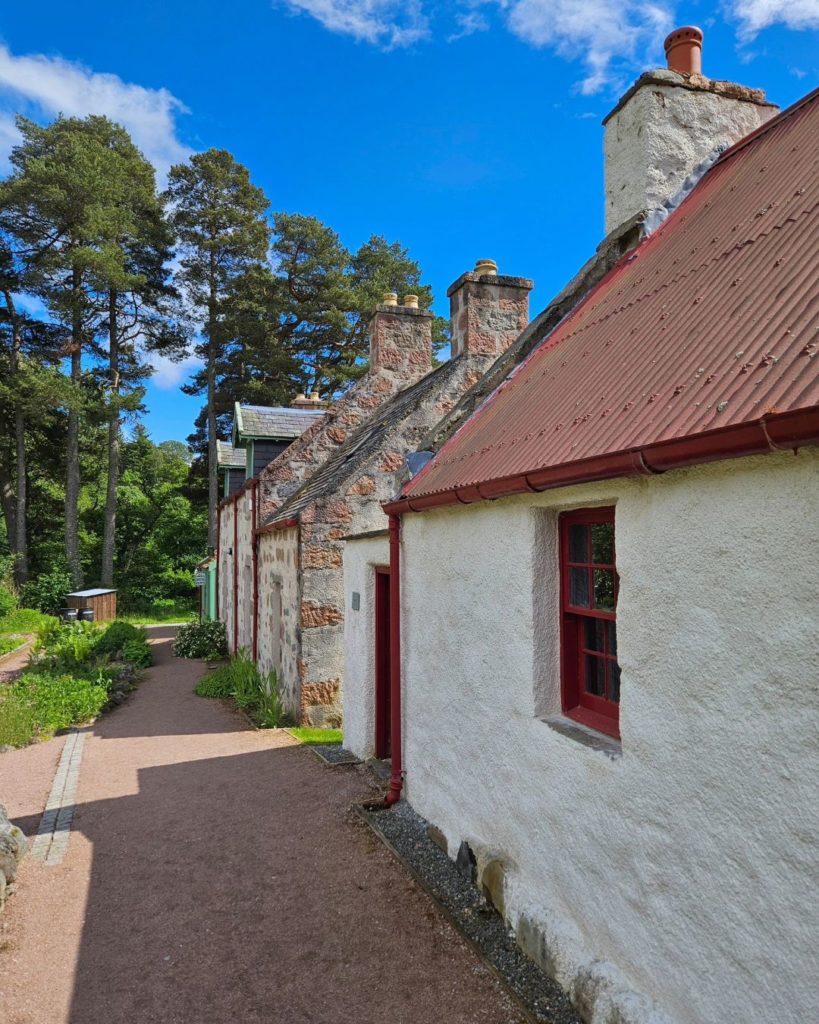
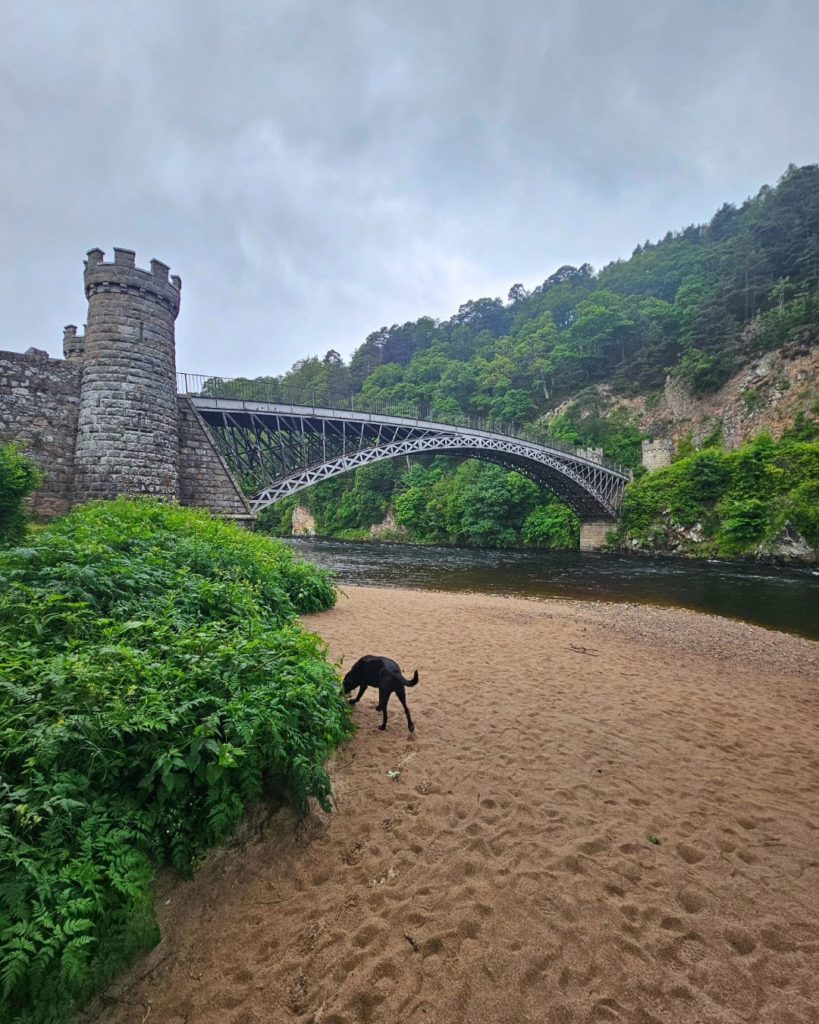
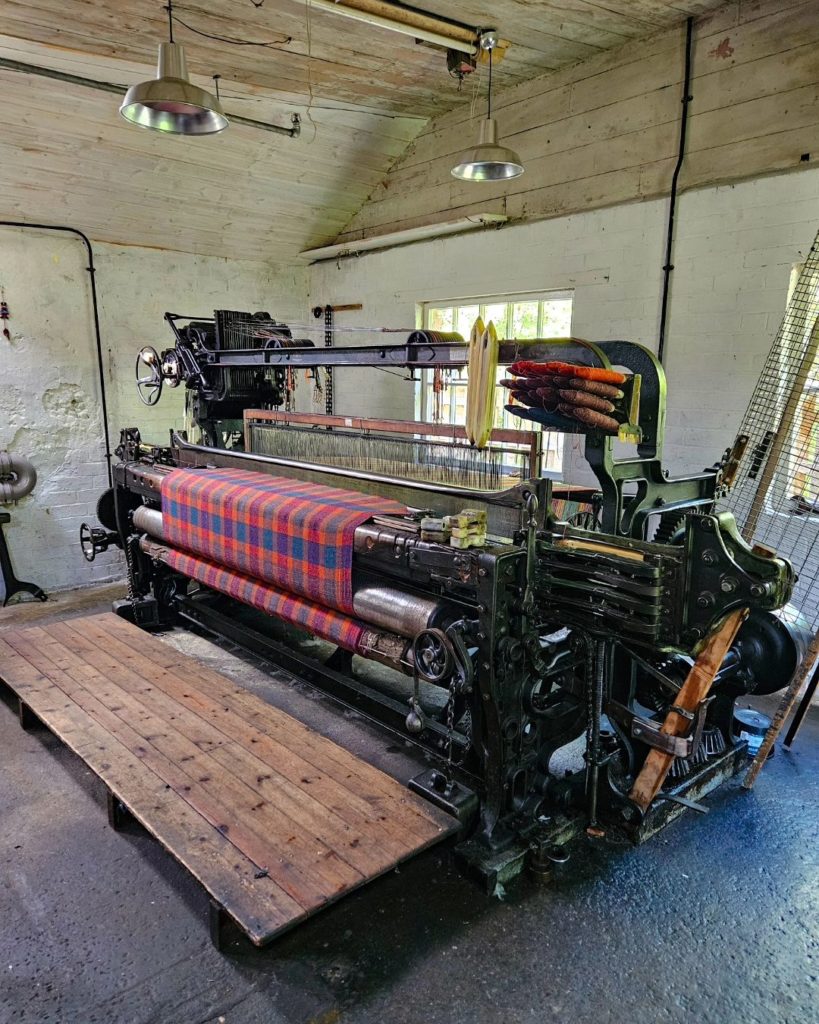
Marvel At Knockando Woollen Mill
For over 240 years, Knockando Woollen Mill has been clanking away as an incredible piece of Moray Speyside history. It’s a rare example of a rural, district mill, still producing beautiful fabric to this day, carrying out the full process, from raw wool to finished cloth.
Take a guided tour inside the interesting collection of buildings to uncover an amazing collection of Victorian machinery. Learn about the complicated process and history of how Knockando developed as it passed through a series of owners. There’s nowhere quite like this anywhere in Scotland and it makes the perfect way to round off your third day exploring Moray Speyside’s heritage.
Day 4
Take Part In The Highland Games
If you manage to time your trip to Moray Speyside right, there’s nothing quite like a visit to one of the region’s Highland Games! Watch the heavy competitors tossing cabers and launching weights before exploring the local craft stalls. Admire the classic cars and heritage tractors as the sound of pipe bands fills the air.
While they evolved from competitions between clan members, the Highland Games have evolved and become more organised. Today, they are all about coming together and celebrating everything Scottish with music, sport and dance at their core. Moray Speyside has five to choose from: Gordon Castle, Tomintoul, Forres, Aberlour and Dufftown.
Accommodation – Mossyards Cottages
I was lucky enough to stay at Mossyards Cottages for my entire trip around Moray Speyside and it was absolutely perfect. There are two small cottages that offer privacy and comfort in the Laich of Moray, run by the nicest of people.
Mossyards is dog-friendly and peaceful, surrounded by fields and countryside. It’s right at the heart of the region, making it the perfect base for exploring, no matter how rigidly you decide to stick to the itinerary.
